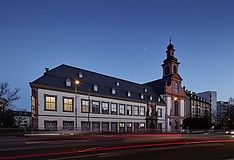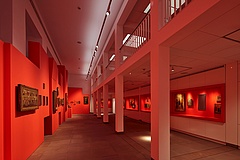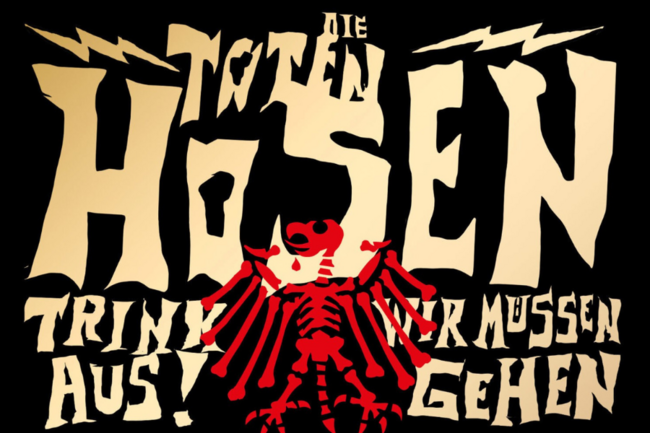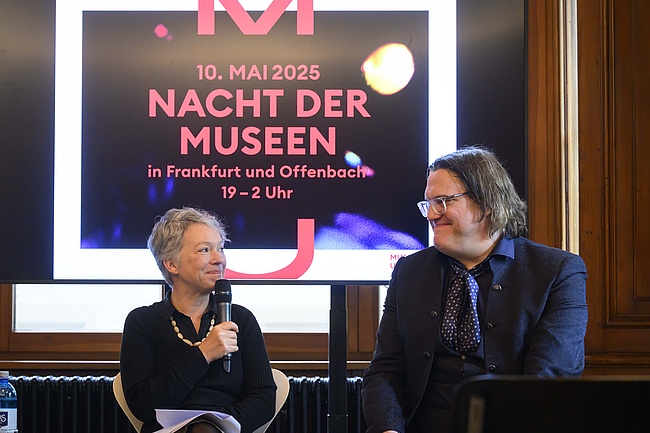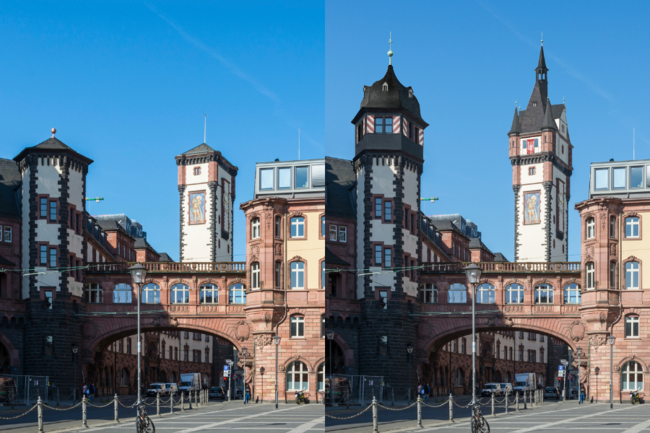Update: The museum will be open to the public from March 16. Visitors* can register by phone or email with desired date and time (60 minutes) with at least one day's notice at: projekte.ikonenmuseum@stadt-frankfurt.de or Tel 069 212 42358. The phone is manned Monday to Friday 9am-11am and 2pm-4pm. For a visit on Saturday or Sunday it is necessary to register by Friday. It is also possible to register at the ticket office on site. There may be a short wait here.
Original article:
At least digitally, a museum reopening could be celebrated later this week: After more than a year of reconstruction and renovation, the Icon Museum in Frankfurt am Main presents itself with a completely new exhibition architecture and a new concept in terms of content. This is the first time since its opening 30 years ago that the museum on the Alte Brücke has undergone such extensive modernization. Head of the Department of Culture Ina Hartwig is convinced of the implementation of the new museum concept, as she emphasized at the digital opening: "[The Icon Museum] has been brought up to date and completely renewed in terms of construction, content and digital design. With its new presentation and spatial concept, it not only represents an enrichment for Frankfurt's museum landscape, but also supports understanding in our multicultural city."
Under the direction of Prof. Matthias Wagner K and the curatorial direction of Konstanze Runge, who has held this position since September 2019, the museum places the relationship between people and icons at the center of its completely renewed exhibition.
The new exhibition concept
.The foyer has been restructured in terms of both space and content as a starting point for the new permanent exhibition, allowing the overall exhibition space to be significantly expanded. Here, the origin, distribution and diverse materiality and visual language of icons are now vividly conveyed.
After the introductory area, visitors come to the main room, where a deeper immersion in the world of icons is made possible. This is done, on the one hand, through the aspect of the meaning and function of the icons in the church as well as in the domestic space and, on the other hand, through the narrative staging of the representations of the life and passion of Jesus and Mary. While the main room is mainly dedicated to the appearance of the icons in the ecclesiastical context, the gallery is dominated by an intimate atmosphere of privacy. Here, visitors encounter a variety of saints, such as the especially venerated St. Nicholas or St. George.
The 130 selected icons and religious objects appear in all new splendor after extensive conservation and restoration. The particularly characteristic traces of use as a sign of the relationship between people and their icons have been carefully preserved. The icons are presented largely without glass and at eye level. Particularly valuable icons, metal icons and small objects are protected by glass and hoods. The expanded collection shows the impressive diversity and fascination of Orthodox imagery from Russia, Greece and Romania to Egypt and Ethiopia and makes it accessible to a broad as well as international audience.
The new presentation and spatial concept
The icons and other religious objects from various countries can be discovered by the visitors in a completely new exhibition architecture, which was developed for the direct experience of the sacred works of art. The room-within-a-room concept, which has been adapted to the needs of the new permanent exhibition, takes up the squares of Oswald Mathias Ungers' postmodern architecture from the end of the 20th century and extends them horizontally and vertically. Through recesses, different height dimensions, inclinations and projections, a change in this architecture remains imaginable. Freestanding, there are no direct wall connections, both the historical architecture and Ungers' modern architecture are partly visible, but always perceptible. The colour design of the exhibition architecture and the newly conceived glassless display case inserts, which does not take a back seat, but on the contrary is intensely monochrome, stands in clear contrast to the white of the building's architecture. Highly pigmented, the colour forms a deliberately lacklustre but extremely corporeal surface that brings the religious artworks to the foreground - making them almost float - and, together with the specially designed lighting concept and state-of-the-art LED technology, provides an aesthetic basis for staging the new, content-based orientation of the permanent exhibition.
"In a city with more than 14 Christian Orthodox parishes and characterized by rich cultural diversity, the Icon Museum aims not only to be a place of preservation of cultural heritage, but moreover to open a space of encounter that invites everyone and contributes to a successful coexistence of people from different cultural, religious as well as non-religious backgrounds. The tasks of a museum have changed considerably since the founding of Frankfurt's Museumsufer at the end of the 20th century. With its all-round renewed concept, the Icon Museum is responding to current social challenges," Hartwig said.







